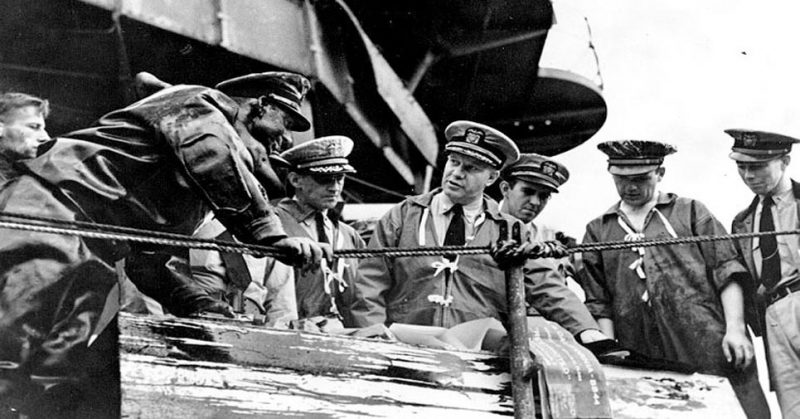If Ken Hartle’s life was written as fiction, no one would believe it.
Salvage diver, prune-picker, ranch hand, kicked in the face by a mule, stabbed in the neck, six heart bypass surgeries, and that’s only a small part of his life.
Hartle died recently, age 103, at a care center in Escondido, California,
He was a Navy diver during the Second World War with the unenviable task of retrieving bodies from vessels sunk by the Japanese after the attack on Pearl Harbour in 1941 that destroyed numerous ships, among them the battleship Arizona which went down with 1,177 crew.
Hartle might have been the eldest surviving Pearl Harbour salvage diver, said David Ball of San Francisco, an officer with the Navy Divers Association.
He and his fellow Seabees worked at a time when a heavy canvas suit and brass helmet weighing more than 220 pounds was commonplace. Scuba equipment as we know it was not yet available.
Hartle was employed as a civilian ship-fitter at a San Francisco Bay Area Navy yard when the war began. He tried to enlist but was refused until 1943, since his job was deemed essential to the war effort.
He faced death each time he towed away unexploded torpedoes and salvaging planes and ships, starting at Pearl Harbour and later from Maine to the Philippines. He was proud of the work he did the following two years, his children said.
A cracked anchor chain spewed metal shards that almost killed him, in addition to suffering the bends, dangerous and painful bubbles in his blood stream from inadequate decompression.
Even though Hartle told his children about various tasks he did, not a word was said about recovering the bodies of long-submerged sailors resting on Pearl Harbour’s sea bottom.
He didn’t like discussing it, said his son, Ken W. Hartle, of Montana. He would only say the most difficult part of the task was ‘bringing up our boys.’
Born in 1913 in Bakersfield, California, Ambert Kenneth Hartle’s sister and a brother died from accidents or illnesses before he was 10, and his father was sent to a tuberculosis sanitarium in 1916, according to his children.
He and his siblings were sent to live with relatives in Los Angeles, but Hartle hitchhiked instead to the San Francisco Bay Area. There, he labored as a ranch hand, prune-picker and a cook for resorts and mining camps, received a high school diploma and studied college level commercial art, in addition to managing the basketball team.
His son said Hartle cheated death numerous times, starting at three years old when a mule kicked him the face, knocking him unconscious for almost a day.
At nine years old, he was stabbed in the neck during a schoolyard fight. In college, he was thrown hundreds of feet when his car was crushed by a truck. Working alone at a mining camp, Hartle was bitten by a scorpion and a rattlesnake.
He had six heart bypass surgeries, colon, and prostate cancer, and broke his shoulder at 97 when he fell from a ladder while trimming trees.
He came from a generation who were extremely tough, said his daughter and long-term caregiver, Karen.
Following the war, he lived in California and became a chicken breeder in San Diego County. His second wife passed away in 2008, Epoch Times reported.
He was an accomplished storyteller; he could talk about his life in the most amazing detail, his daughter said. His life was wonderful, and he loved it.
